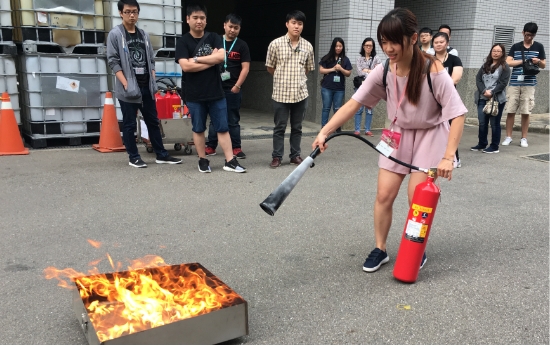Inclusive Workplace
Workplace Safety
PTI has established an occupational health and safety management system based on ISO 45001. To prevent occupational injuries and accidents and ensure the safety and health of our workplace, we also devised our "Environment, Safety and Health Policy". We have established an occupational safety and health committee as prescribed by the Occupational Safety and Health Act, and the chairperson of the committee, who also be appointed as executive representatives. In accordance with the Occupational Safety and Health Act, there are more than one third representation in the occupational safety and health committee. The committee met once every quarter to review, coordinate, and make suggestions for safety and health affairs.
Management of Ergonomic Hazards
- The ergonomic hazards evaluation and classification management system was established.
- Hazards evaluation is performed through observation of on-site operations and evaluation of the tools used.
- Musculoskeletal injury survey is conducted among employees.
- Improvements in the identification of high-risk operations continued.
Workplace Monitoring
- Workplace monitoring is performed once every six months as required by law.
- Monitoring and planning is based on on-site operations.
- Exposure evaluation is performed with chemical monitoring findings.
- Trendy analysis of monitoring findings is performed for constant improvement.
Chemical Substance Management
- The list of chemicals is created and risk assessment is performed.
- Safety facilities and hazard labeling are in place.
- Workplace is controlled and inspected for its operations.
- Educational training and certification.
Mechanical Equipment Safety Management
- Mechanical equipment is evaluated for its safety risk.
- Safety labeling is in place for machines.
- Safety and health inspections, checks, maintenance, and care.
- Educational training and certification.
Protective Equipment Management
- The protective equipment identification mechanism is created in order to meet operational demand.
- Protective equipment function certification and testing.
- Suitable protective equipment is available in the field and is put on at work.
- Periodic inspections, checks, and updates to maintain the functionality of protective equipment.
Emergency Response and Rehearsal
- Emergency response group in premises is formed and trained.
- Communication, response, investigation, and after-math recovery procedures are established.
- Rehearsals for fires, earthquakes, and chemical disasters are conducted periodically.
- All employees take part in the rehearsal in order to enhance their awareness of preventing against disasters.
